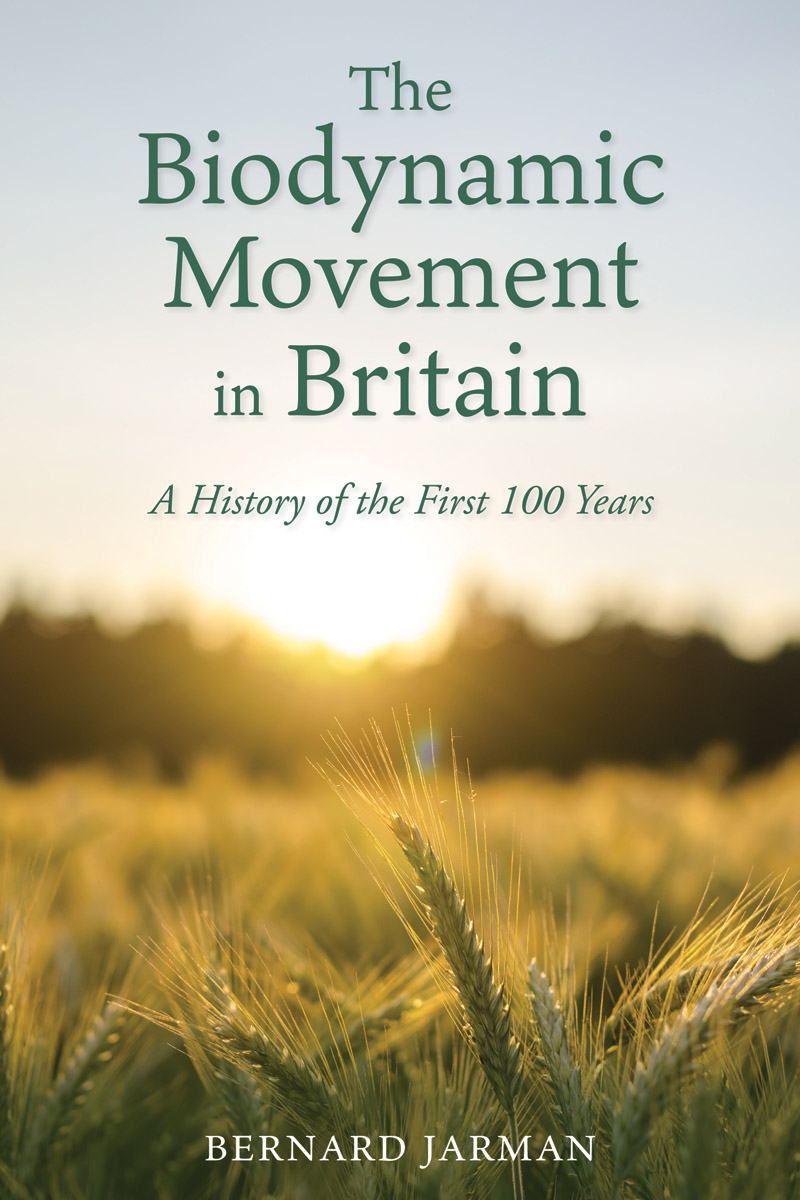The Biodynamic Movement in Britain: A History of the First 100 Years
by Floris Books • 2 February 2024 • Biodynamics, Extract • 0 Comments

Biodynamics grew out of Rudolf Steiner’s Agriculture Course, a series of lectures he gave in 1924. It is now an inspirational worldwide movement bringing a uniquely holistic, organic agriculture to farms, vineyards and gardens.
In The Biodynamic Movement in Britain: A History of the First 100 Years, Bernard Jarman, former Director of the Biodynamic Agricultural Association for the UK, charts the development of biodynamics in Britain following its arrival in 1928 through to the present day.
In this extract, Jarman introduces us to Maurice Wood, the first biodynamic farmer in Britain.
Sleights Farm: The First Biodynamic Farm in Britain
The heart of any agricultural movement lies with those who work the earth as practical farmers. The person who can be described as the first biodynamic farmer in Britain was Maurice Wood of Sleights Farm in Yorkshire. Maurice Wood first heard about the new agriculture when he attended the World Conference for Spiritual Science and its Practical Applications in London in 1928. As a result of hearing Carl Mier’s lecture, Maurice, who was already an active farmer, decided to convert his farm in Yorkshire and pioneer practical biodynamic work in Britain.
Maurice Wood was born in 1884 in the industrial city of Leeds. He was the son of a successful builder and, reaching further back, his forefathers had been tradesmen and merchants. When Maurice finished secondary school he went to college and studied business management. When he graduated he quite naturally took up his father’s vocation and established himself as a builder. Many of the houses in Leeds as well as other buildings in the city were constructed by him, and a fair number of these are still in existence today. During this time Maurice met his wife, Etta. They settled down and soon started a family. In 1910 their daughter, Janet, was born and in 1913 her brother, John.

Maurice Wood
This peaceful and secure existence came to an abrupt end in 1914 with the outbreak of the First World War. At the time, Maurice was thirty years old with a promising career in front of him, but nothing would be the same again. In the aftermath of the war, his efforts to pick up the pieces of his life in a world so utterly different caused him to think long and deep about the future. Should he return to the business world and pick up where he left off or should he begin something far more creative? His friends and relatives all advised Maurice to return to the work for which he had been trained. After all, why should the opportunity of a good career be discarded?
To do anything else would be uncertain. However, Maurice knew that his former business had not been able to meet his family’s needs – when it came to the crunch it had been unable to provide the basic necessities of life. He became convinced that the only sure way to rebuild their lives was to grow their own food. Everything else would follow on from that. And so this city boy embarked on a journey that was to lead to a lifelong commitment to agriculture.
Having come to this decision Maurice immediately set out to find suitable land. It wasn’t long before he found and bought a farm about twelve miles to the north of Leeds outside the village of Huby. Sleights Farm was a 15-acre (6-hectare) holding set in rolling and well-wooded landscape on the edge of the moors some 500 feet (150 metres) above sea level. The buildings and farmhouse were more or less derelict and the land, though fairly fertile, was pretty neglected. Despite the enormous amount of work facing them, he moved there with his wife and two young children in the autumn of 1919. They had much to get used to: the silence of the countryside, the darkness of the night away from the city lights, and the knowledge that from now on they would have to make their living from the soil, not to mention carry out the renovations required for their dwelling.
The main focus of the farm enterprise consisted of hens (since Maurice figured that eggs would always be in high demand) and vegetable production. From the very beginning he carried the ideal of a self-sufficient farm and planned to feed his birds on what the land could provide. Not being a born farmer – an uncommon situation in those days – he knew that he had much to learn if he was to be successful in his new profession. He always kept his eyes and ears open for any hints and good advice that might come his way. Maurice once explained that an old hedger he employed in the early years of the enterprise became a priceless source of rural knowledge and agricultural wisdom. Under his guidance, Maurice grew more confident as a farmer and gradually managed to support his family from the land.
Learn more about The Biodynamic Movement in Britain by Bernard Jarman here. Join our dedicated biodynamic mailing list here for exclusive discounts and to keep up to date on our new books.